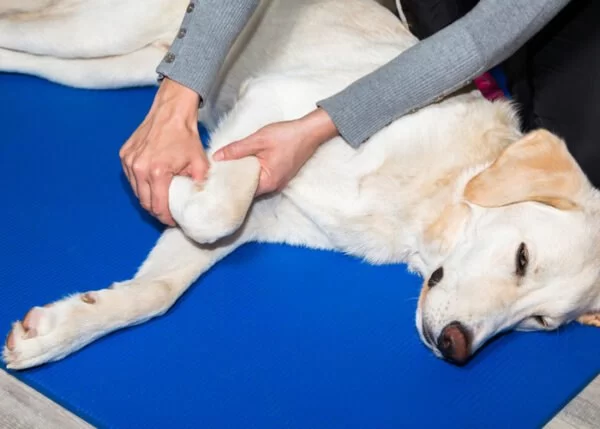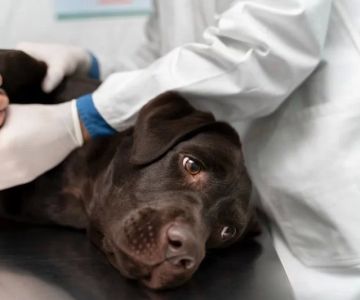- understanding-bone-joint-disease-in-pets - Understanding Bone & Joint Disease in Pets
- common-symptoms-and-warning-signs - Common Symptoms and Warning Signs
- diagnosis-and-early-detection - Diagnosis and Early Detection: Why Timing Matters
- treatment-options-for-bone-and-joint-disease - Effective Treatment Options for Bone and Joint Disease
- supportive-therapies-and-home-care - Supportive Therapies and Home Care Tips
- real-life-pet-story - Real-Life Pet Story: Luna’s Recovery Journey
- preventive-measures-and-lifestyle-adjustments - Preventive Measures and Lifestyle Adjustments
1. Understanding Bone & Joint Disease in Pets
Bone and joint diseases are among the most common health challenges affecting pets, especially as they age. Conditions like arthritis, hip dysplasia, and degenerative joint disease can cause chronic pain, stiffness, and mobility loss. While large-breed dogs are particularly prone to joint issues, cats and smaller pets are not immune. The key to improving their quality of life lies in understanding the causes and taking proactive measures.
1.1 The Root Causes of Joint Disease
Bone and joint problems often stem from a combination of genetics, injury, poor nutrition, or obesity. Over time, wear and tear on the cartilage that cushions the joints can lead to inflammation and pain. Pets that have been overly active, or conversely, sedentary for long periods, are both at risk. Veterinary experts at Hidden Brook Veterinary emphasize that early management—through balanced diets and appropriate exercise—can dramatically slow the disease’s progression.
1.2 The Role of Aging and Breed Predisposition
Just like humans, pets experience joint degeneration as they age. Large breeds such as German Shepherds, Labradors, and Golden Retrievers are genetically more susceptible to joint issues. Cats, especially overweight or indoor ones, can develop arthritis that affects their ability to jump or climb. Recognizing this natural aging process allows owners to make better care decisions early on.
2. Common Symptoms and Warning Signs
Detecting bone and joint problems early can make a huge difference in treatment success. Many pet owners mistake early symptoms for simple aging or laziness, but subtle signs often indicate discomfort that deserves medical attention.
2.1 Behavioral Changes to Watch For
Pets with joint pain may hesitate before climbing stairs, jumping on furniture, or going for walks. You might notice them limping after rest, licking or biting at certain joints, or showing irritability when touched. Reduced enthusiasm for play or reluctance to stand can also signal chronic pain.
2.2 Physical Indicators
Swelling around the joints, stiffness after naps, or audible clicking noises when walking can be early warnings. Over time, untreated joint issues can lead to visible muscle loss in the legs or back. At Hidden Brook Veterinary, regular physical exams and motion evaluations help detect these subtle signs before they become serious.
3. Diagnosis and Early Detection: Why Timing Matters
Timely diagnosis is critical for managing bone and joint diseases effectively. Vets typically use a combination of physical exams, imaging tests like X-rays, and sometimes blood tests to determine the extent of damage or inflammation. Early diagnosis allows for interventions that slow progression and reduce pain.
3.1 The Importance of Routine Checkups
Annual or biannual checkups are essential for detecting changes in joint health. Early-stage arthritis can often be managed with simple lifestyle adjustments and supplements. As Hidden Brook Veterinary specialists often note, prevention is always less costly and less painful than treatment after damage has set in.
3.2 Diagnostic Imaging and Advanced Testing
Modern veterinary clinics now use digital X-rays, ultrasound, and joint fluid analysis to pinpoint the exact cause of pain. These tools allow vets to customize treatment plans that target inflammation and rebuild cartilage support over time.
4. Effective Treatment Options for Bone and Joint Disease
Once diagnosed, the goal of treatment is to relieve pain, restore mobility, and prevent further damage. Depending on the severity of the condition, treatments may range from medication and supplements to physical therapy or surgery.
4.1 Medications and Supplements
Veterinarians often prescribe anti-inflammatory drugs or pain relievers to manage discomfort. Nutritional supplements containing glucosamine, chondroitin, or omega-3 fatty acids can promote joint health and rebuild cartilage. For milder cases, diet and controlled exercise are often sufficient to maintain flexibility.
4.2 Physical and Alternative Therapies
Physical therapy, hydrotherapy, and laser treatments have proven effective in improving joint function. Gentle swimming sessions or low-impact walks can strengthen muscles without straining the joints. At Hidden Brook Veterinary, rehabilitation programs are customized to each pet’s age, breed, and lifestyle for optimal recovery.
4.3 Surgical Interventions
In advanced cases, surgical procedures like joint replacement or corrective osteotomy may be necessary. These surgeries are typically followed by months of rehabilitation but can dramatically improve mobility and reduce chronic pain.
5. Supportive Therapies and Home Care Tips
Home environment adjustments can greatly improve a pet’s comfort level. Soft bedding, non-slip flooring, and raised food bowls can ease daily strain. Weight control is another crucial aspect—excess pounds put extra pressure on already fragile joints.
5.1 Massage and Gentle Exercise
Regular massage can increase blood flow and reduce stiffness, while gentle stretching keeps joints flexible. Short, frequent walks on soft surfaces like grass are better than long runs on pavement. Always monitor your pet’s energy level to avoid overexertion.
5.2 Nutritional Care
Diet plays a key role in joint health. Foods rich in omega-3 fatty acids, lean proteins, and antioxidants support joint repair and reduce inflammation. Supplements like turmeric or green-lipped mussel extract may also be beneficial under veterinary supervision.
6. Real-Life Pet Story: Luna’s Recovery Journey
Luna, a 10-year-old Golden Retriever, began limping after her daily walks. Her owner assumed it was due to old age, but a visit to Hidden Brook Veterinary revealed early arthritis. With a tailored care plan involving medication, hydrotherapy, and weight management, Luna regained her playful energy within months. Her story illustrates how early intervention and consistent care can transform a pet’s quality of life.
7. Preventive Measures and Lifestyle Adjustments
Preventing bone and joint disease starts with balanced nutrition, proper weight management, and regular physical activity. Avoid overexerting young pets whose joints are still developing, and provide supportive bedding to reduce joint impact. Annual vet visits and early mobility screenings can identify risks before symptoms appear.
7.1 Building a Healthier Future for Your Pet
Bone and joint disease doesn’t have to limit your pet’s happiness. With the right care, treatment, and attention to detail, pets can live long, active, and pain-free lives. For personalized advice and advanced treatment options, consult the compassionate experts at Hidden Brook Veterinary, where your pet’s mobility and comfort always come first.












